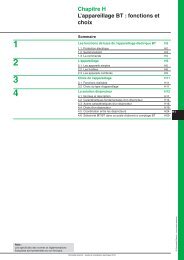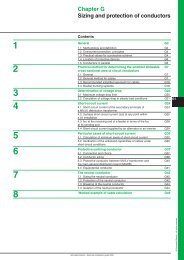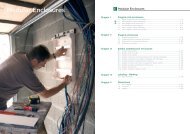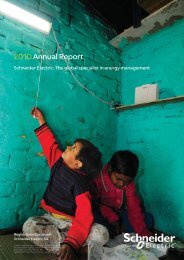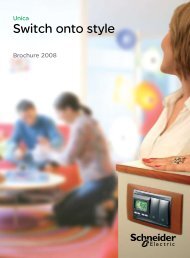to download - Schneider Electric
to download - Schneider Electric
to download - Schneider Electric
Create successful ePaper yourself
Turn your PDF publications into a flip-book with our unique Google optimized e-Paper software.
Energy as Currency: Controlling Costs <strong>to</strong> Boost BusinessA Solution <strong>to</strong> Enableand Sustain EnergyEfficiencyCus<strong>to</strong>mer Case:>10,000 students>40 buildings$4 million saved in energy costsAmbitious energy goals are possible <strong>to</strong>day. In most installations, <strong>Schneider</strong> <strong>Electric</strong>—theworld leader in energy management—can target up <strong>to</strong> 30% energy savings using existingtechnologies.To help you make the most of your energy, <strong>Schneider</strong> <strong>Electric</strong> uses a four-step process <strong>to</strong>ensure that your business meets both its short- and long-term efficiency goals:1. Measurement. Energy and power quality meters, alongwith an in-depth energy audit, are the first crucial steps inimplementing energy efficiency. Because after all: You can’tmanage what you don’t measure.2. Fixing the basics. Incorporating low consumption devices,insulation material, and power fac<strong>to</strong>r correction are just afew ways your company can see immediate energy savings.However, without proper control, these measures often mitigateagainst energy losses rather than make a real reduction inenergy consumed.3. Au<strong>to</strong>mation. Optimising systems such as lighting andHVAC through au<strong>to</strong>mation is a key element of what we callActive Energy Efficiency—the process of effecting permanentchange through the measurement, moni<strong>to</strong>ring, and control ofenergy usage.4. Moni<strong>to</strong>r, maintain, and improve. Energy efficiency needs astructured and persistent approach. Energy managementsoftware, maintenance services, and remote moni<strong>to</strong>ring systemscan help businesses see continued results, setting the stage forthe next cycle of improvements.Passive EnergyEfficiency:1/3 <strong>to</strong> 1/2 ofpotential savings.Active EnergyEfficiency:1/2 <strong>to</strong> 2/3 ofpotential savings.Table of Contents 7



